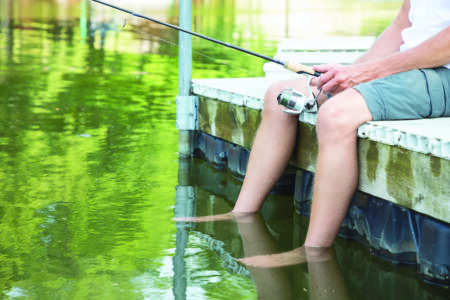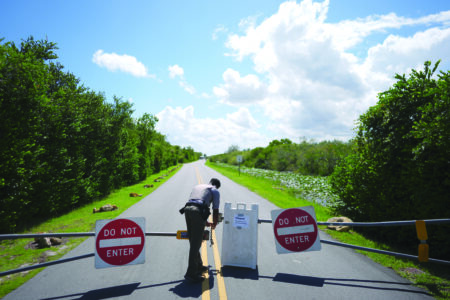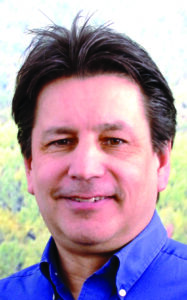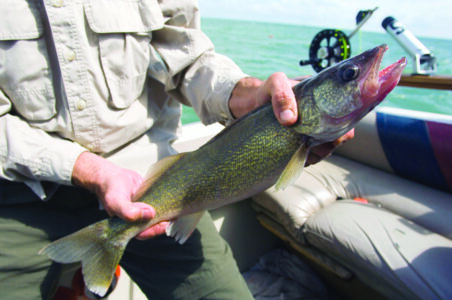Outdoors North: Nature is the ultimate medicine
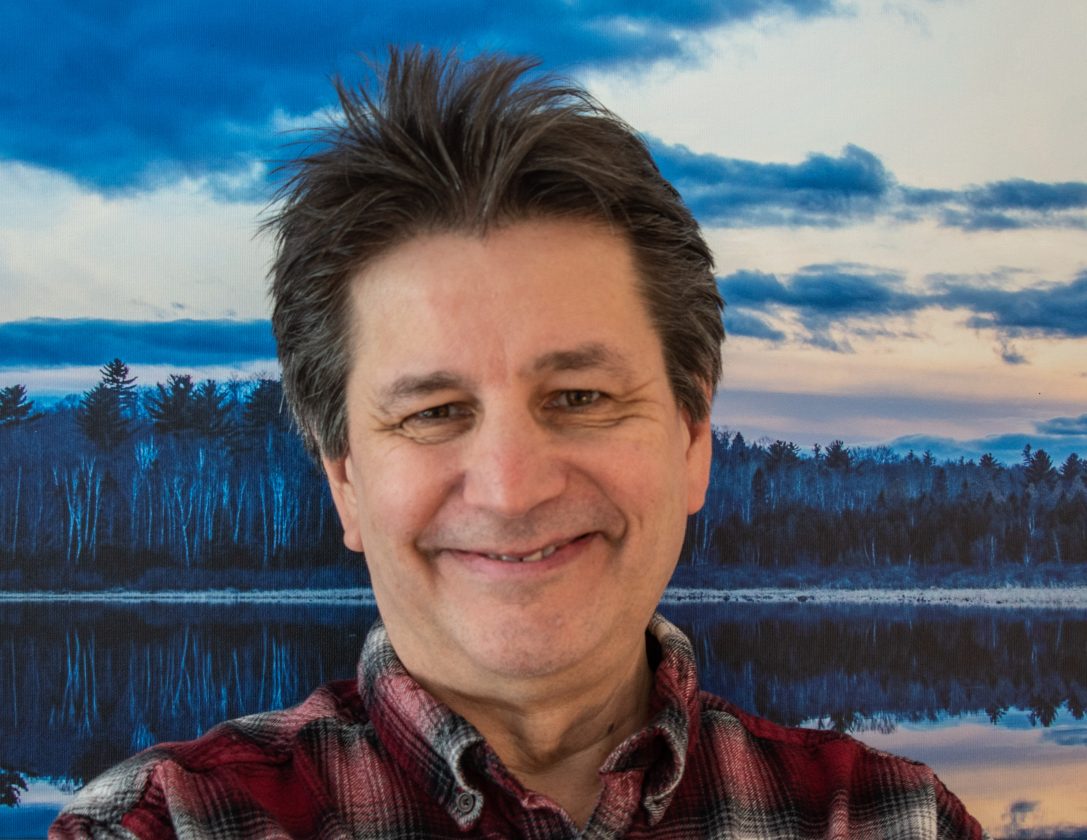
JOHN PEPIN
“A: You’re an integral and valuable part of some master plan; or B: clearly as important as a dirt clog or that can,” – Tonio K.
It was about 5:30 this morning when I was startled from my sleep by a sound that I couldn’t make clear in my head.
At first, I thought it was coyotes yipping out there in the woods somewhere, but then I realized the sound was much closer to the house.
I then thought it might be one of our neighbors’ dogs barking.
With my eyes still closed, I lay there listening to hear the sound again.
This time, it registered loud and clear.
It was a barred owl, perched somewhere in the trees not far outside the bedroom window.
As the owl continued to hoot, I tried to wake my wife to ask if she had heard the calling, but she was sleeping hard.
I rolled out of bed and made my way downstairs and out the back door to the patio to see if I could find out exactly where the owl was sitting.
When I got out there, I immediately sensed the chilly morning air and noticed the sky was changing the guard, with the lightness of dawn emerging in the east and the last glimpses of the nighttime’s stars and planets fading away.
The owl had stopped hooting. This is often a sign that the bird is perched somewhere very close. He or was probably watching me and had heard me click open the back door.
I tried to imitate a barred owl call, which I am usually good at, but my throat hadn’t cleared itself from the sleep I just awakened from. All that came out was croaks or raspy sounds, that didn’t at all resemble hoots.
Just then, from farther back in the woods, another owl began hooting.
I knew it wasn’t the same owl because this one was a great horned owl.
I had no real hope of imitating its low and booming hooting calls.
I just listened excitedly and tried to mimic the barred owl again.
I didn’t do much better this time.
After a couple of minutes, both owls had ceased calling altogether.
The barred owl – a medium-sized, dark eyed bird with a rounded head – was still likely watching me from what might turn out now to be a day roost. The much larger and yellow-eyed great horned owl was too far away for us to see each other.
It was an exciting way to wake up. It was the kind of encounter with nature that can fire my imagination and enthusiasm enough to last all day long.
In the Indigenous culture of the Ojibwe of the Great Lakes Region, owls are respected for their intelligence, observation and patience.
According to the website “Native American Mythology Worldwide,” the great horned owl is often seen by the Ojibwe “as a master of knowledge, possessing an understanding of the world that transcends human comprehension.
“Known for its keen eyesight, the owl represents the ability to see beyond the surface, providing deeper insights into situations. The owl’s quiet demeanor and stillness symbolize the importance of reflection and taking time to understand one’s surroundings.”
The birds are also seen as protectors.
But the reverence and respect afforded to owls by the Ojibwe varies greatly from the mythology of other Indigenous cultures, many of which view owls as symbols of death.
For those tribes, hearing owls hooting is considered unlucky. Some tribes associate owls with ghosts or see them as message carriers from beyond the grave or deliverers of supernatural warnings.
According to the mythology website, in the Aztec and Mayan religions of Mexico, owls served as the companions and messengers of the gods of death.
So, I was awakened from my morning sleep either by birds watching over me or bringing me messages of death.
I would expect nothing less.
About four hours later, I walked through the kitchen and stopped at the sink to look out the window to the backyard, now lit in full sunshine.
I barely got my sights set when I noticed a bird drop off a branch sticking up beyond one of the brush piles and fly away quickly in smooth sweeping maneuvers.
The size of the bird, its agility, likely perching after pursuing sparrows, chickadees or other small birds seeking cover in the brush pile, and overall gun-metal, blue-gray color, I surmised that this was a merlin – a small falcon.
To the Ojibwe, the Great Falcon is another respected bird.
According to the mythology website, the falcon is admired by the Ojibwe for its ability to see great distances, which symbolizes clarity of thought and insight.
“As a guide, the Great Falcon is associated with knowledge and understanding, often providing direction to those seeking answers. The falcon represents the spirit of freedom, encouraging individuals to rise above challenges and limitations.”
I recently read a social media post aligning Ojibwe bird and animal totems with the date a person is born. In that exercise, my birth totem was a falcon.
Perhaps another message from the spirits of the natural world.
I’ll take it, especially with the positivity it connotates. I’ll admit that just reading about those attributes of the Great Falcon, I felt buoyed in spirit.
Meanwhile, autumn continues to deliver its wonder and beauty to the region, albeit in a more copper, gold and brown show than is typical of this time of year.
Some prognosticators suggest the season peak for leaf peepers won’t arrive until the middle of the month, which would be a good couple of weeks beyond the average.
The spawning steelhead, Coho and Chinook salmon seem to be right on time in their return to Great Lakes tributaries to spawn.
Along a stream a couple days ago, I watched what was probably about a 3-foot-long salmon jump completely out of the water in front of me before re-entering the water with scarcely a splash.
I stopped fishing early after I snapped my line and lost two lures within about 20 minutes on the exact same submerged log.
I’ll bet that pine log has probably got a goldmine’s worth of shimmering brass, stainless steel and otherwise adorned hooks hanging from it there under the depths of the slowly moving water.
Thems what they call the breaks.
On another day, I could come back to the exact same place and not snag my line a single time and even catch a couple of big fish. Like most anglers I suspect, I’ve done that kind of thing before, more than once.
Blue and sunny skies during the day and chilly fall temperatures overnight are what the hardwoods need for their leaves to turn color. Over the past week, we’ve had a good share of both.
There’s plenty to do around the yard and the house before the first snow falls and the killing frost arrives, but we’re across the Rubicon now. All bets are off in October.
I’d like to see nature wait, at least until Halloween is over with, before it brings the winter snow. It seems more likely as not that the weather will be predictably stormy – rain or snow – for all the trick-or-treaters to confront in their costumes and face paints.
It often seems to be that way. A cold, rainy night can really ruin the outing, especially for the youngest kids. That’s no fun.
I plan to take a ride up to one of the inland lakes today for some isolation, peace and quiet and a chance to see the sun shining across that big, blue wide opening in the green forest.
It’s the kind of place where a moose, bear or a wolf could appear at any moment.
I am already envisioning sitting or lying back for a while on an old, sun-warmed dead log, closing my eyes and listening to the water lapping softly against the shore.
I’ll no doubt put my hands and maybe my feet into what will be cold water.
The sweet and heady smells of autumn wafting toward me from the hardwood stands around the lake will make my head swim. This time of year, the woods are a feast for the senses.
It will be another walk, another rest, another opportunity to reflect on the passage of time, wishing I could bottle up a day like this to release some freezing February morning to melt away my winter blues.
As the evening wears on over the lake, the evening shadows will descend far sooner than I’d like, bringing darkness across the scene. Maybe my day will end the way it began – hearing the hooting of owls from the trees.
Maybe there will be coyotes yipping out there or a wolf howling.
Whatever happens, even if it’s nothing at all, I will have been enriched and better for the experience. Nature is the ultimate medicine for the inside, the outside, the mind, the heart, the soul and the spirit.
Outdoors North is a weekly column produced by the Michigan Department of Natural Resources on a wide range of topics important to those who enjoy and appreciate Michigan’s world-class natural resources of the Upper Peninsula.

